Gameni is a traditional Japanese dish that holds a special place in the cuisine of Fukuoka Prefecture. This flavorful dish, rooted in local customs and traditions, offers a unique taste of Japanese culinary heritage. In this article, we will delve into the origins, ingredients, and cultural significance of Gameni, giving you a glimpse into the world of this beloved Japanese specialty.
What is Gameni?
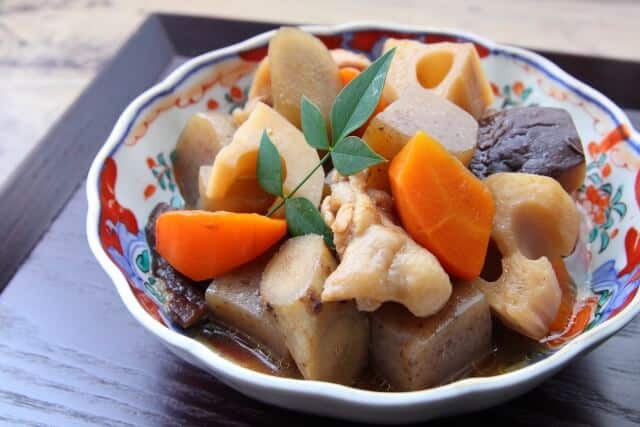
“Gameni” is a special dish from Fukuoka Prefecture in Japan. Its name comes from a local dialect word, “gamekurikomu,” which means to gather together. People also call it fried chicken, Chikuzenni, or Chikuzendaki. Nowadays, it’s more common to use chicken instead of soft-shelled turtles. This dish is very important in the local community and is often made for New Year’s and celebrations. Locals prepared the Gameni by stir-frying ingredients like chicken, burdock, carrots, taro, lotus root, and konnyaku, all cut into small pieces, in oil. Then, they simmer these ingredients in a flavorful broth. This broth is usually made from bonito or kelp stock and includes seasonings like soy sauce and sugar, among others.
It is so popular that locals consider it one of the top 100 local dishes for rural areas in Fukuoka Prefecture, alongside another dish called mizutaki. In 2006, Fukuoka City had the highest consumption of burdock root in all of Japan, and this root is often used in making Gameni so it might be one reason for its popularity.
Gameni History
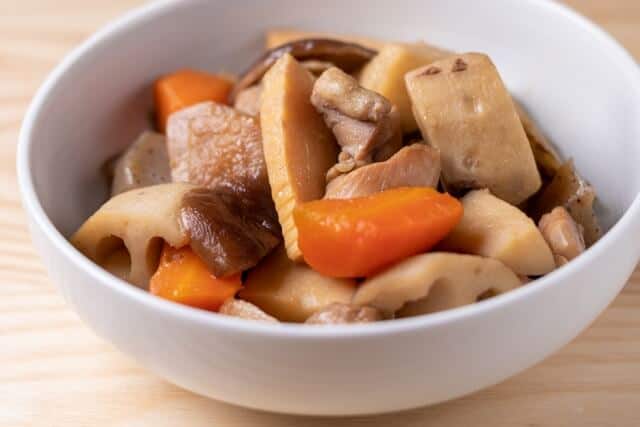
Gameni, a dish with its roots in the Chikuzen domain (also known as Kuroda or Fukuoka domain) in northern Kyushu, is sometimes referred to as “Chikuzen-ni” due to its association with that region. There are various stories about its origins. One theory suggests that it was named “gameni” in connection with the term “gamekuri,” while another theory suggests that it originally involved simmering “mud turtles” and vegetables caught in the Chikuzen area, with the possibility that “kameni” became “game” over time.
An interesting historical account points to Toyotomi Hideyoshi, who, during the Bunroku era while camping in Hakata, simmered a soft-shelled turtle known as “dorogame” or “dobugame” with available vegetables. This event is considered the beginning of Gameni. Although turtle was the initial main ingredient, in the past, before chicken became the primary choice as it is today, locals also used other ingredients like tuna and whale.
While chicken is the common choice for Gameni today, in earlier times, household-raised chickens were saved for special occasions like Obon and New Year’s, making this dish a precious and valued part of festive meals.
Difference between Gameni and Chikuzenni
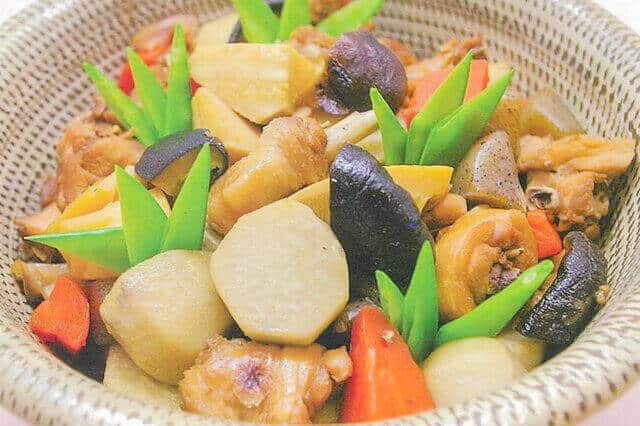
“Game-ni” and “Chikuzen-ni” are similar dishes, but they have some differences. In “Chikuzen-ni,” the ingredients are stir-fried in oil before simmering, while in “Game-ni,” they are directly simmered without frying. Originally, “Gameni” used older egg-laying chickens, so it didn’t need extra oil due to the chicken’s fat. “Gameni” typically used whole chicken with bones, but nowadays, boneless chicken parts are common. Both dishes may use oil for flavor and scum prevention. The distinction between them is now mainly regional; in Fukuoka, it’s “Gameni,” while elsewhere, it might be called “Chikuzenni.”
Season for eating Gameni
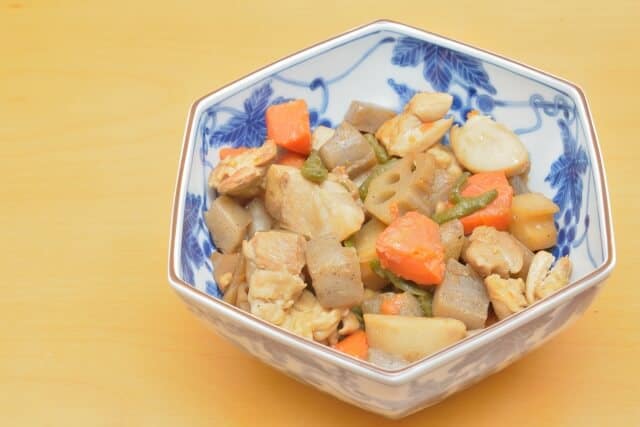
“Gameni” is a dish that locals commonly prepare for special occasions like New Year’s Day, festivals, and weddings. It is a well-loved local dish in Fukuoka Prefecture and has even earned a place among the top 100 rural area dishes there. People enjoy it not only as a main dish but also as a delightful side dish to accompany sake (Japanese rice wine). You can often find it served during the Hakata Gion Yamakasa celebrations and various festivals, adding to the festive spirit of these events.
How to eat?
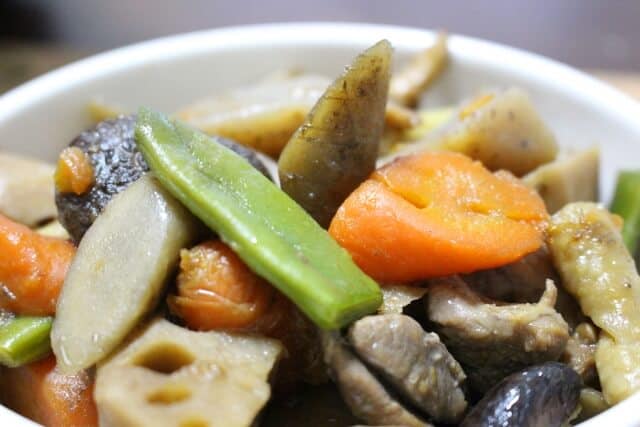
To enjoy “Gameni,” you start by frying all the ingredients. Then, you add the flavorful stock and seasonings and let everything simmer until the vegetables become tender. The types of vegetables used can change with the seasons, and on Shikajima Island in Fukuoka City, Fukuoka Prefecture, there’s a tradition of using an odd number of toppings when making this dish. Some people like to add ginger for extra flavor, and at times, green peas are thrown in to enhance the dish further.
Gameni FAQ
- What other prefectures cook Gameni?
-
Gameni is a local dish originating from Fukuoka Prefecture. Nowadays, it has become a staple of Japanese cuisine throughout the country, and even used in school lunches in many regions. In Fukuoka Prefecture, Saga Prefecture, Oita Prefecture (Hita City, etc.), and parts of Nagasaki Prefecture (Omura City), it has long been popular as a New Year’s dish and as a dish to entertain important guests.
- What other dishes are Fukuoka’s specialty?
-
In addition to chicken, Fukuoka boasts one of the highest consumption rates in Japan of burdock, which is essential for gameni. Famous dishes using chicken and burdock include chicken mizutaki, hakata ramen, and motsunabe.
Gameni Recipe
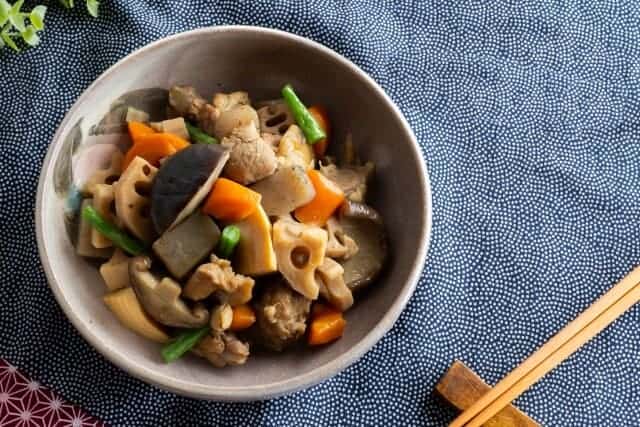
Gameni Ingredients
| Ingredients of Gameni for 4-5 persons | Measurements |
|---|---|
| Chicken thigh | 250-300g |
| Potato (or taro) | 300g |
| Carrot | 80g |
| Bamboo shoot | 100g |
| Dried shiitake | 10g (3-4 pieces) |
| Green beans | 20g |
| Konnyaku | 100g |
| Dashi soup | 400g |
| [Seasoning A] Soy sauce | 25~30g |
| [Seasoning A] Salt | 4-5g |
| [Seasoning A] Mirin | 30g |
| [Seasoning A] Sugar | 20-30g |
| Oil | 14g |
| Ginger | 15g |
How to make Gameni?
Cut the chicken into bite-sized pieces. Then, cut the potatoes and carrots into chunks.
Cut the bamboo shoots and konnyaku in the same way as step 1 and boil them. Cut the konjac into bristle or kanko pieces.
Rehydrate the shiitake mushrooms and cut them in half. Boil the green beans with salt and cut them into 4-5cm lengths.
Heat oil in a pan, lightly stir-fry the chicken, add a few shiitake mushrooms stir-fry some more, add the stock and seasoning A, and simmer until the vegetables are cooked through.
Add the green beans to Step 4, place in a bowl, and top with the ginger. Or you can put a combination of various kinds on a skewer.
Where to buy Gameni?
Ishikura (いしくら)
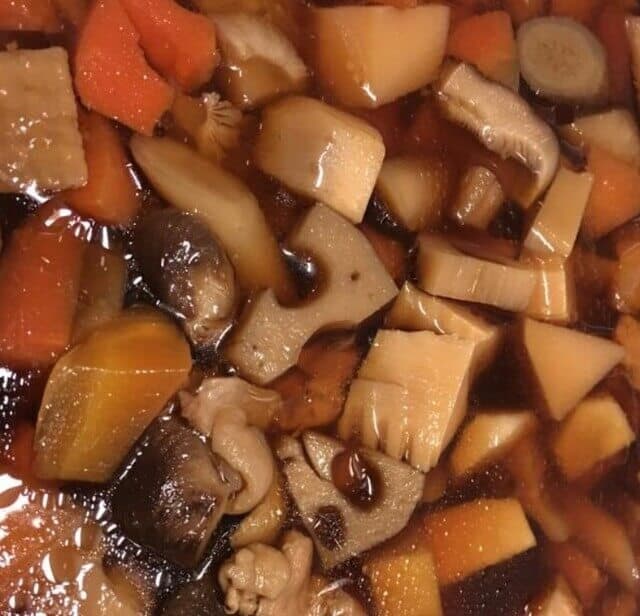
At this restaurant, they often use Hakata flavors in small bowls. It’s the basic flavor of the restaurant, so they ask the customers to try it first. Although people tend to think of it as the same simmered dish, the interesting thing about cooking is that there are quite a few differences depending on the person who cooks it and the restaurant where it is made.
Fukuoka Musashi (福岡武蔵)

This store serves Gameni and its soup stock is the deciding factor. It has a deep richness, yet is easy to eat. A masterpiece that has also won Rakuten rankings. When you think of Fukuoka, this is it.
Final Thoughts

In conclusion, Gameni is a beloved dish from Fukuoka Prefecture, Japan, with a rich history and a special place in local celebrations and gatherings. Its unique cooking methods and regional variations add to its charm and versatility. We hope that this article has provided you with valuable insights into the origins, ingredients, and customs associated with Gameni.
You can check some Japanese dishes below that we know you would like to try too.
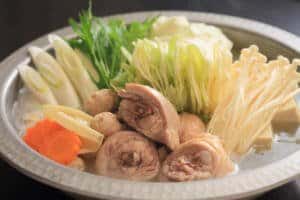
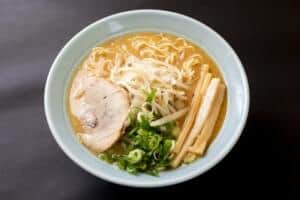
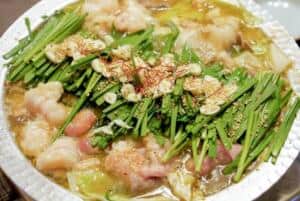
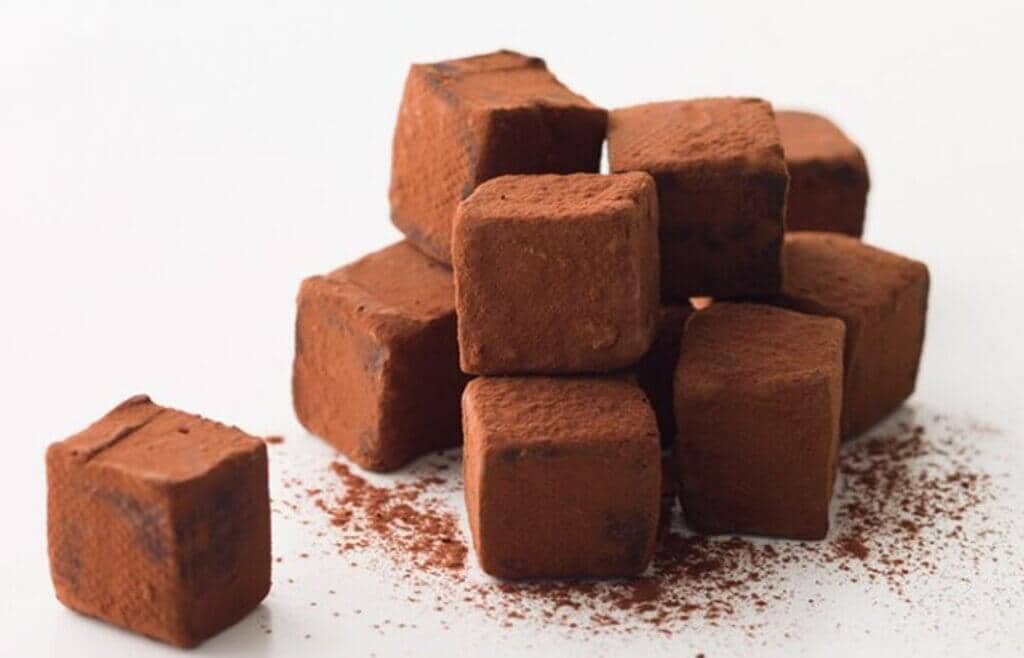
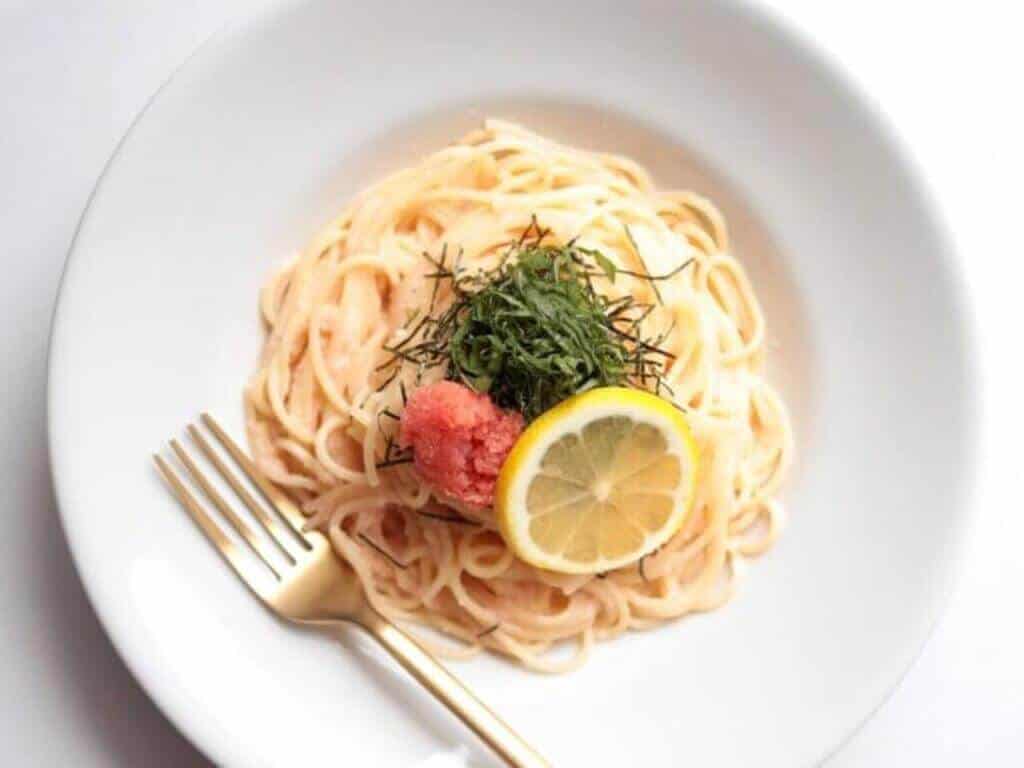
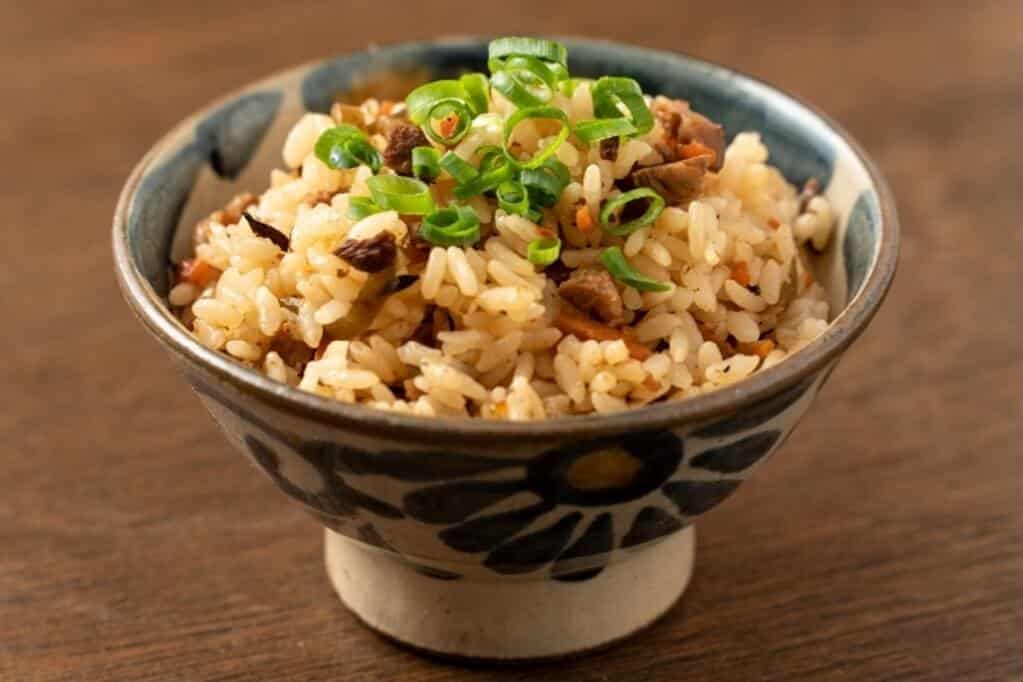
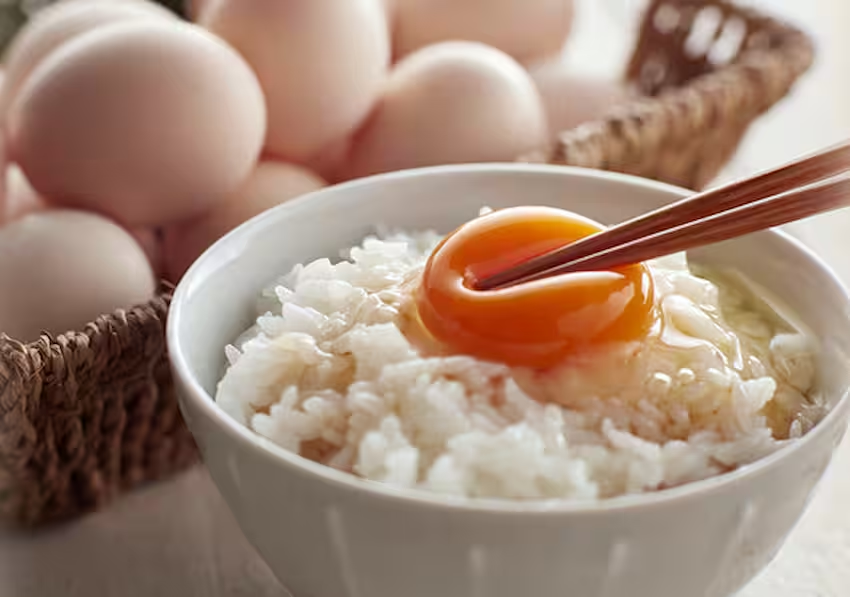
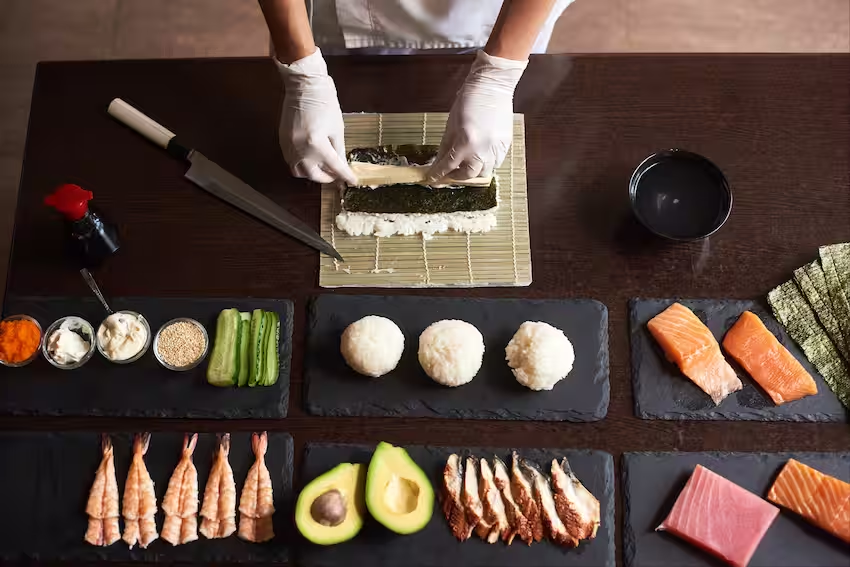

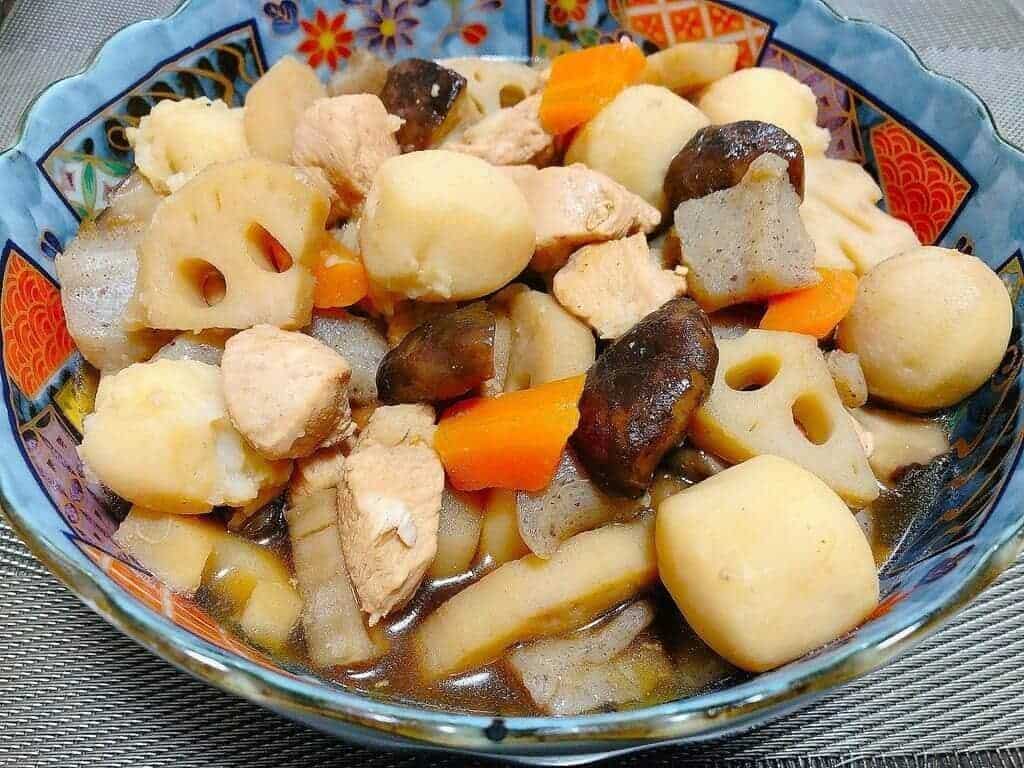
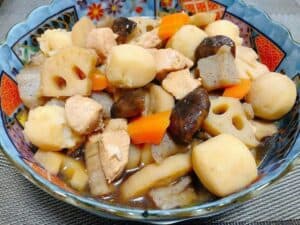
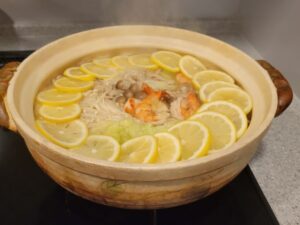

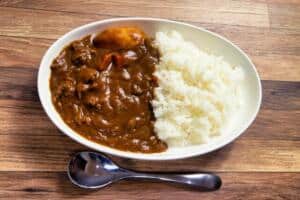
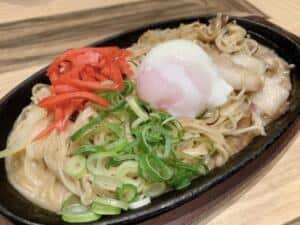
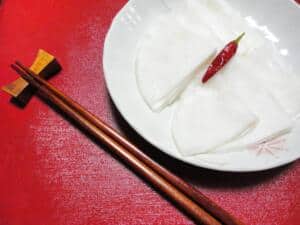
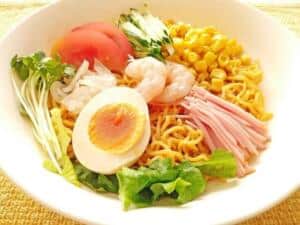
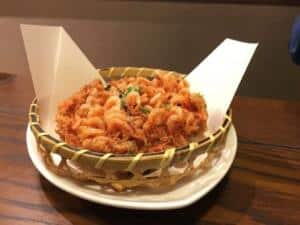

Comments